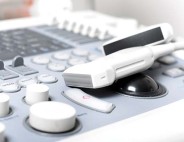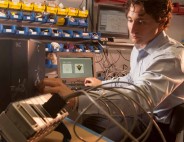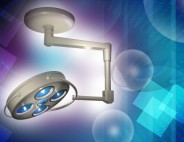Hurdles to Test Medical Device Sector’s Global Leadership
02 Jan, 2013
By Rachel Duran
In This Article
The medical device industry faces unprecedented challenges in 2013.
U.S.-based companies have been the dominant leader in the global medical devices marketplace for 50 years; however, a new federal tax and the regulatory approval process are creating barriers to retaining this global leadership spot. The global industry is estimated to be worth $350 billion.
According to a study authored by Yair Holtzman, former director of the global life science practice of WTP Advisors, the favorable environment for medical innovation has led to significant advances in health care technology. However, Holtzman notes in the report that challenges from within the United States, a flourishing medical device industry abroad, and continued U.S. investments in developing countries, pose risks to the economy and the health of patients.
Among the stakeholders assisting medical tech firms in overcoming barriers to success are regional and local community economic development organizations and their partners. They understand the innovation economy will be one of the major drivers of the next generation of economic growth, which includes the medical-technology sector. In regard to medical device firms, these partners offer support systems ranging from free or low-cost incubation space; access to seed funds dedicated to medical device firms; service programs featuring, among other assets, experts in FDA processes; entrepreneurial competitions; and networking and cluster synergies.
One of the greatest priorities for med-tech firms is planning for the new 2.3 percent federal medical device excise tax, which takes effect this month. “I think a fair number of players in the market were counting on, under the U.S. Supreme Court or perhaps the election results, to give them some opportunity for repeal of this tax,” says Jeff Malo, director, WTP Advisors. The company, headquartered in White Plains, N.Y., offers tax advisory services for a global marketplace.
“At this point [mid-November] it is clear the tax will go into effect the first quarter of 2013,” Malo says. “It will be the first quarter when companies are expected to comply with the new tax and the reporting rules around it.”
The new policy presents challenges to the industry. “Margins in this industry are not huge so a 2.3 percent tax on their ultimate revenues is, for some companies, going to be a game changer in terms of how they approach the market and what they are able to do with their workforce and so on,” Malo says. “I do believe we will see daily additional announcements from companies that they will be reducing their work[force] size and changing some of their business strategies as a result of the medical device tax.”
A supporting player in tax policy relief for medical device companies has been the federal R&D tax credit. At press time it remained unclear if the U.S. Congress was going to renew the tax credit and resolve many of the uncertainties that face not only medical device companies but any industry that conducts a significant amount of R&D.
“Practitioners and people in the community are expecting the credit to be renewed and extended through 2013,” Malo says, “but 2013 will also be a year for widespread debate on corporate tax reforms as a whole.” The credit is one of the few items that might survive the debates over corporate tax reform, “and hopefully that will be enough to offset some of the damage that things like the medical device tax will do to the industry,” Malo says.
He adds there have a number of proposals to establish a permanent R&D tax credit, and even discussion in regard to increasing the rate at which expenses can qualify for the credit.
Tijuana-San Diego Metro Ideal Spot for Medical Device Firms
Tijuana, Baja California, Mexico, is home to North America’s largest concentration of medical device employees, with more than 31,000 workers as of 2012. Located minutes from downtown San Diego, Tijuana is home to nearly 40 medical device manufacturing companies. While most are stand-alone subsidiaries, there are also 14 medical device contract manufacturers, and companies using shelter maquiladora services.
“Tijuana has become one of the most interesting sites for global companies to expand, following a bi-national operations strategy,” says Flavio Olivieri, executive director, Tijuana Economic Development Corp. The medical device industry has achieved a growth rate of more than 7 percent annually. The region is part of the Medical Device Cluster of the Californias organization, based in Tijuana, and is part of collaborative efforts connecting life sciences firms and research institutions in the Cali-Baja Mega Region and throughout Southern California.
Recent medical device projects include the announcement by Greatbatch Inc., a developer of high-tech cardio devices, that it has selected Tijuana and a location in Indiana as key sites to relocate its orthopedic operations. In another project, Iceland-based Össur has announced a 40,000-square-foot expansion to prepare for its expanding portfolio of orthopedic products. The company conducts R&D and design in California, and conducts its manufacturing in Tijuana, working under a bi-national operations scheme.
In yet other activity, Welch Allyn announced $2 million worth of investments in two projects; one to support the aerospace industry; and the creation of a medical device global financial shared services center to tap into the local talent base, and as a measure to mitigate new taxes on the industry that go into effect this month.
For complete details about the advantages of Tijuana’s med-tech sector, visit www.tijuanaedc.org.
Live Long and Prosper
At the local development levels, officials in Bartlett, Tenn., Peoria, Ariz., Grand Rapids, Mich., and Cambridge, Minn., are attentively at work building up, strengthening and maintaining their medical device clusters to assist companies in overcoming hurdles.
Bartlett and Shelby County are part of the Memphis metro, which is home to the nation’s second-largest orthopedic cluster, behind Warsaw, Ind., says John P. Threadgill, president, Bartlett Area Chamber of Commerce. Stemming from the addition of an orthopedic school at the University of Tennessee’s medical school 100 years ago, a vibrant cluster has developed in the Memphis metro, home to three major orthopedic OEMs and a variety of medical device suppliers.
A recent expansion in the cluster is Bioventus, which formed in May 2012 as a venture between Essex Woodlands and Smith & Nephew Inc. Bioventus will invest $5 million and move its Memphis-based employees into a new 40,000-square-foot facility in February.
Orthopedic industry leaders Smith & Nephew, Wright Medical Technology Inc., and the spinal division of Medtronics are located in the region. Smith & Nephew’s headquarters is located near the Bartlett airport. Threadgill says two of the three large orthopedic OEMs are located on the Interstate 40 corridor, and located between them along the corridor are nearly 50 life-science related companies and laboratories.
Threadgill says economic development officials are partnering with the orthopedic and medical device sectors to overcome barriers to success; the Bartlett community is home to nearly 5,000 people involved in the orthopedic industry. A survey conducted a year ago demonstrated that industry players themselves didn’t realize the breadth of the cluster. The survey also found the No. 1 challenge to the medical device cluster is a skilled workforce, and that the sector could grow even more if it was assured access to a skilled pipeline of workers. “Everyone is in agreement that the industry has to drive the training and we will assist them,” Threadgill says.
“I do believe we will see daily additional announcements from companies that they will be reducing their work[force] size and changing some of their business strategies as a result of the medical device tax.” – Jeff Malo, WTP Advisors
In Peoria, part of the Phoenix metro area, city officials want to leverage medical assets in the region to create a cluster of med-tech firms. The city is located in proximity to a number of hospitals, and is home to Plaza del Rio, the state’s largest non-hospital anchored medical plaza. In addition, Midwestern University is located in nearby Glendale. “When you look at the future, especially under the current administration’s health care program, it is not hard to envision a large growth in terms of personalized medicine, and that is medical devices,” says Scott Whyte, director of the economic development services department, city of Peoria.
In addition to allocating nearly $5.5 million to seed the initiative, the city has established a 6,800-square-foot incubator space at an existing facility with wet lab, flex lab and office space. The BioInspire incubator is located in a section of Peoria populated with medical assets such as medical research facilities and physicians’ offices.
“What makes the incubator unique is that in addition to space and the service program, the city has allocated two pots of funding,” says Tom Rainey, director, BioInspire, which is operated by BioAccel, an organization that accelerates the commercialization of life science firms. Six companies have been accepted to the BioInspire facility and programming.
One of the city’s funds supports early stage, proof of concept ideas, awarding $10,000 to $15,000 worth of funding to support business plan development and things such as patent searches. The second fund, the new venture development fund awards up to $300,000 to support larger projects.
The incubation or service program Rainey mentions is a network of advisors who act as mentors. “We have service providers that offer free initial services or who charge below market rates,” Rainey says.
BioInspire also includes a quality system initiative focused on assisting companies in navigating the stringent FDA regulations. “Otherwise, they have to go out and muddle their way through to set this up on their own,” Rainey notes.
The BioInspire team is also making connections with the biotech industry in the state of Arizona, including partnerships to share resources, such as Flagstaff’s AZ Core Lab’s specialty equipment. What’s more, Rainey says by offering a research rich environment, connections to service providers and people who understand FDA processes, the comfort level of investors’ increases. “In this network and incubator the likelihood of success is far greater than average than a company going it alone,” he says.
The city of Peoria has also offered free rent in the incubator for the first year companies are involved in the incubation program as long as they remain in Peoria for the first five years of operations. “We are looking, through the BioInspire incubator, to graduate those companies that can locate in the city of Peoria,” Whyte says. “Once they come out of the incubator they are in a position to absorb existing space in the city.”
As is the case with cluster development, the goal is to attract supply chain manufacturers to expanding medical device companies, as well as attract companies that want to acquire emerging technologies. To support the room to grow, the city of Peoria is working with developers to encourage the creation of additional office and flex space at the city’s industrial parks.
Moving to the Grand Rapids, Mich., metro, the region features the Medical Mile, which is home to a state designated Smart Zone. Grand Rapids features the highest concentration of medical device firms in Michigan. The smart zone is dedicated to supporting the life sciences and medical devices industries. “We have expanded outside of the incubator and we are looking down the road at where else we can find the necessary space,” says Birgit Klohs, president and CEO, The Right Place Inc. “This is a highly entrepreneurial community that is very connected, has the resources and has the infrastructure to support a robust medical device cluster. This ranges from universities to hospitals to the talent that you need to be here; as well as an organization like ours to help get started and integrated into the community.”
Michigan’s strong and robust manufacturing history plays a large element in the success of med-tech firms. “At the end of the day, a medical device is a manufactured product,” Klohs says. She notes that auto suppliers in the region are successfully making the transition and applying their high-precision skills sets to the medical device sector. AutoCam Medical, during a seven-year period, has conducted “what I would call internal tech transfer and has formed a very robust medical device company, producing finely machined parts for the orthopedic industry,” Klohs says.
The Grand Rapids area also includes a major presence from Grand Valley State University, Michigan State’s College of Human Medicine, and the expansion of several hospitals including cancer and children’s hospitals. The West Michigan Medical Device Manufacturing Consortium is facilitated by The Right Place, which among other activities, facilitates university connections for industry.
Another Midwest community featuring a workforce skilled in high-precision manufacturing is Cambridge, Minn., located near the Minneapolis-St. Paul metro region. The community is home to Vanpro Inc., which supplies to several medical device companies, and other industries, and employs 225 people at the facility.
The community is home to Anoka-Ramsey Community College and nearby Pine Technical College, which are both centers of manufacturing excellence, says Lynda Woulfe, city administrator for Cambridge. “Pine has developed a virtual reality training program; and they were recently awarded an $11.3 million grant to develop ongoing training programs for manufacturers in east central Minnesota,” she says.
Woulfe says Cambridge offers medical device firms a lower tax rate structure, available, undeveloped land, and lower costs for building and development than the Twin Cities. “We offer the Cambridge Business Development Corp., which has office space to house startups,” Woulfe says. “We will also look for companies to make investments in.” The city also owns property in industrial parks and offers finance packages, tax increment financing, revolving loan funds, and grants from a foundation’s technology fund.
Access to such funding mechanisms, resources and assets are of vital importance to medical device firms that in 2013 will contend with a new federal tax, as well as uncertainties in regard to the extension of the federal R&D tax credit. “It will be a conservative year for the industry,” Malo says. “When uncertainties, not only with medical devices but in any corporate environment, companies tend to rally their capital to ensure they are prepared for whatever potential outcome may occur. I would recommend compliance and implementing new strategies to reduce the liabilities.”
For complete details on the organizations featured in this article, visit:
Bartlett (Tenn.) Area Chamber of Commerce
BioInspire (Peoria, Ariz.)
Cambridge (Minn.) Economic Development Authority
City of Peoria (Ariz.) Economic Development Services
The Right Place Inc. (Grand Rapids, Mich.)
Illustration by ddpavumba at Free Digital Photos.net
Rachel Duran
Rachel Duran is the editor in chief for Business Xpansion Journal. Contact her at rduran@latitude3.com.














